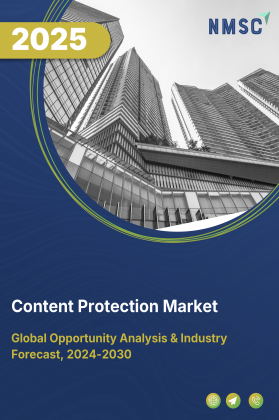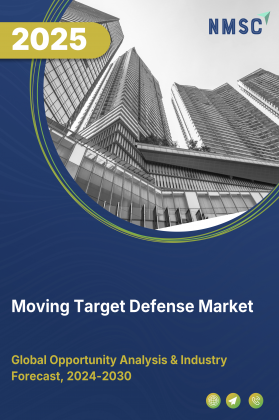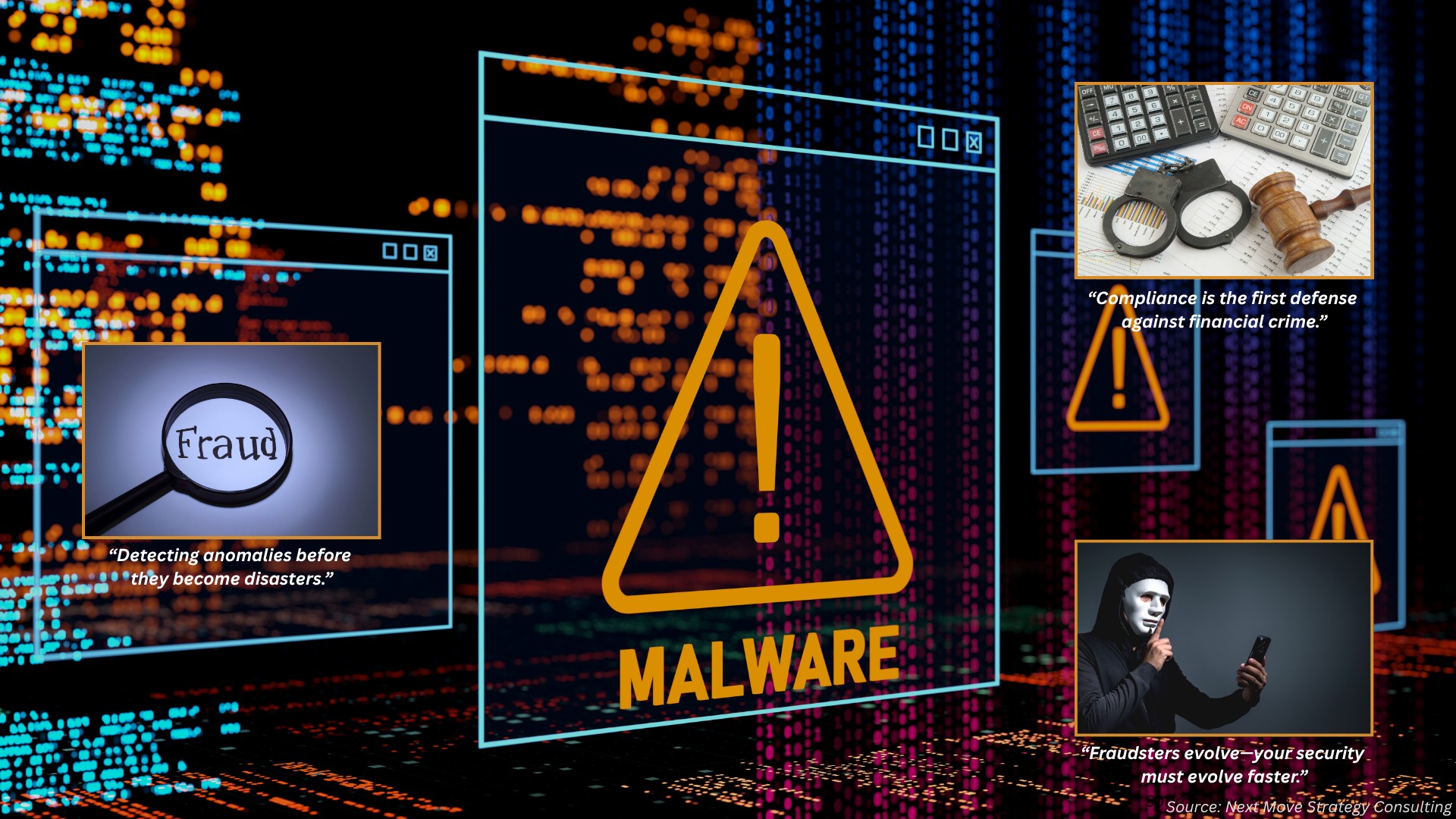
Content Protection Market By Component (Solution, and Services), By Content Type (Video Streaming And Broadcast Content, Audio Streaming, and Music Content, Documents and eBooks and Reports, and Others), By Protection Technology (Digital Rights Management, Conditional Access Systems and Others), By Deployment Model (On-Premises, Cloud-Based, and Hybrid), By End-User (Media & Entertainment, BFSI, Healthcare, and others) – Global Industry Trends and Forecast, 2025–2030.
Industry Outlook
The global Content Protection Market size was valued at USD 4.63 billion in 2024, and is expected to be valued at USD 5.38 billion by the end of 2025. The industry is projected to grow, hitting USD 11.42 billion by 2030, with a CAGR of 16.2% between 2025 and 2030.
The sector has grown rapidly due to the surge in digital content consumption and the rising threat of piracy across media, publishing, and software industries. Organizations increasingly rely on digital rights management, watermarking, encryption, and secure distribution technologies to safeguard intellectual property and sensitive content.
Cloud-based solutions and managed services are gaining traction, enabling scalable protection across multiple devices and platforms. Additionally, advancements in content detection, monitoring, and forensic tools help companies proactively identify unauthorized sharing, ensuring compliance with licensing agreements and reducing revenue losses from illegal distribution.
The market is driven by the expanding adoption of video streaming platforms, e-learning content, and enterprise document management systems, where safeguarding digital assets is critical. Government regulations and industry standards also reinforce the need for robust protection mechanisms.
Content protection solutions cater to a wide range of users, from large studios and publishers to SMEs and independent creators, with deployment models spanning cloud, on-premises, and hybrid environments. Rising investments in anti-piracy enforcement, legal takedown services, and analytics further strengthen the ecosystem, making content protection an essential component of digital strategy.
What are the key trends in the content protection industry?
How is Artificial Intelligence Enhancing Content Protection in 2025?
Artificial Intelligence is revolutionizing content protection by enabling real-time detection and disruption of unauthorized streams. For instance, Nagravision and Broadpeak have partnered to launch a next-generation streaming security solution that leverages AI-driven security analytics and real-time pirate disruption tools.
This collaboration aims to detect, identify, and disrupt pirate streams by degrading their quality, while maintaining service quality for legitimate viewers. The integration of AI allows for scalable protection across multiple devices and platforms, enhancing the effectiveness of content protection measures.
The chart highlights the global AI adoption rates across five major countries in 2024, showing that the U.S. leads at 45%, followed by the UK, China, Germany, and India. This variance in AI adoption has direct implications for the content protection market growth. Higher AI adoption rates mean more digital content is being produced, shared, and consumed, increasing the risk of content theft, piracy, and unauthorized distribution.
Consequently, countries with advanced AI integration, such as the U.S., UK, and China will likely see an accelerated demand for sophisticated content protection solutions powered by AI. On the other hand, markets like India and Germany, with comparatively lower adoption rates, may see slower but steady growth as AI penetration increases. Overall, the expanding landscape of AI implementation globally will drive the need for robust content protection technologies, fostering innovation and investment in this sector to address emerging digital security challenges.
What Role does Blockchain Play in Securing Digital Rights?
Blockchain technology is increasingly being explored for its potential to secure digital rights and prevent unauthorized content distribution. By providing a decentralized and immutable ledger, blockchain can offer transparent tracking of content usage and ownership. This transparency ensures that creators and rights holders have verifiable records of their digital assets, reducing the risk of piracy and unauthorized sharing. Implementing blockchain can streamline licensing processes, reduce administrative overhead, and build trust among stakeholders by providing clear and immutable records of content usage.
How are Regulatory Changes Impacting Content Protection Strategies?
Recent regulatory developments are significantly influencing content protection strategies across the globe. For example, Australia's push for local content quotas on streaming platforms aims to ensure that global services invest in local screen industries. Such regulations necessitate that content protection measures not only secure digital assets but also comply with regional content requirements and intellectual property laws. Organizations stay informed about evolving regulations in their operating regions and adapt their content protection strategies accordingly. This may involve implementing region-specific content filtering, ensuring compliance with local licensing laws, and collaborating with legal experts to navigate the complex regulatory landscape. Proactively addressing regulatory requirements can mitigate legal risks and enhance the credibility of content protection efforts.
What Impact does Consumer Behaviour have on Content Protection Solutions?
Shifts in consumer behaviour, such as the increasing demand for on-demand and mobile content, are driving the need for more flexible and robust content protection solutions. Consumers expect seamless access to content across various devices, prompting content providers to adopt advanced protection measures that do not compromise user experience. This trend necessitates the development of adaptive digital rights management systems and secure streaming technologies that can accommodate diverse consumption patterns. Content protection companies focus on developing solutions that balance security with user convenience. By offering flexible access controls, multi-device compatibility, and user-friendly interfaces, organizations can meet consumer expectations while safeguarding their digital assets.
What are the key market drivers, breakthroughs, and investment opportunities that will shape the Content Protection industry in the next decade?
The global content protection market is experiencing significant growth, driven by the increasing consumption of digital media and the rising threats of piracy and unauthorized distribution. However, this growth is accompanied by challenges such as the complexity of managing content across multiple platforms and the evolving nature of cyber threats. Despite these challenges, there are emerging opportunities in areas like AI-driven security solutions and blockchain-based rights management, which are expected to shape the future of content protection.
Growth Drivers:
How is the surge in digital content consumption influencing content protection?
The rapid increase in digital content consumption, particularly through streaming platforms, has heightened the need for robust content protection measures. This surge necessitates advanced technologies to safeguard intellectual property and ensure compliance with licensing agreements. Companies should focus on implementing scalable and adaptable content protection strategies to address the diverse challenges posed by the expanding digital landscape.
The chart demonstrates a steady and significant rise in the number of social media user identities globally, increasing from 3,484 million in 2019 to 5,037 million in 2024. This surge in social media users directly amplifies digital content creation, sharing, and consumption, making platforms more vulnerable to unauthorized content usage and piracy.
As billions of new identities enter the ecosystem, the proliferation of user-generated content and multimedia assets escalates the risk of copyright violations, plagiarism, and content theft. Consequently, this exponential growth in social media participation is a key driver behind the content protection market expansion, prompting higher demand for advanced digital rights management, AI-powered monitoring, and content security solutions to safeguard creators and brands in an increasingly digital world.
What role does technological advancement play in enhancing content protection?
Technological innovations, such as AI-driven security analytics and blockchain-based rights management, are revolutionizing content protection. For instance, Nagravision and Broadpeak's partnership aims to combat piracy in live sports content streaming by leveraging AI and advanced content delivery networks. These advancements enable real-time detection and disruption of unauthorized streams, enhancing the effectiveness of content protection measures. Organizations should invest in emerging technologies to stay ahead of evolving threats and ensure the security of their digital assets.
Growth Inhibitors:
How do evolving cyber threats impact content protection strategies?
The increasing sophistication of cyber threats poses significant challenges to content protection strategies. Reports indicate that the global cybercrime industry is projected to cost the world trillions annually by 2025, underscoring the urgent need for businesses to implement robust security measures. These evolving threats require continuous adaptation of content protection strategies to mitigate risks and safeguard digital assets. Companies must prioritize cybersecurity and regularly update their protection measures to address emerging vulnerabilities.
How can blockchain technology enhance content protection and rights management?
Blockchain technology offers a promising solution for enhancing content protection and rights management. A study published on arXiv discusses the development of a blockchain-based secure digital content distribution system that integrates decentralized storage and content delivery networks to enhance content protection.
This approach ensures content authenticity, privacy, and controlled access through smart contracts and asymmetric encryption. Investing in blockchain solutions can provide transparent tracking of content usage and ownership, reducing the risk of piracy and unauthorized sharing. Organizations should explore blockchain-based solutions to strengthen their content protection strategies and build trust among stakeholders.
How is the content protection market segmented in this report, and what are the key insights from segmentation analysis?
By Component Insights
Which Component Type is Dominating the Content Protection Market?
Based on component, the market is segmented into solution and services.
The solution segment holds a significant share in the content protection market report. This dominance is driven by the increasing demand for technologies such as Digital Rights Management (DRM), encryption, watermarking, and access control mechanisms. These solutions are essential for safeguarding digital content from unauthorized access and distribution.
Services complement the technological solutions by providing essential support and expertise. Services in the content protection market encompass managed services, including monitoring and support, as well as professional services like consulting, implementation, and training. These services ensure the effective deployment and operation of content protection solutions.
By Content Type Insights
How is the Global Content Protection Market Segmented Across Key Content Types in 2025?
Based on content type, the market is segmented into video streaming and broadcast content, audio streaming and music content, documents and e-books and reports, images and digital art and photography, software and application binaries and games, live events and sports rights protection, and educational content and courseware.
Video streaming and broadcast content represent the largest content protection market share, driven by the surge in OTT platforms and digital broadcasting. According to a 2024 report by the International Telecommunication Union (ITU), global internet traffic from video streaming accounts for over 70% of total consumer traffic. This growth necessitates robust DRM, watermarking, and anti-piracy solutions.
The proliferation of digital music platforms and streaming services has heightened the need for content protection in the audio segment. Music piracy continues to impact revenue globally, with IFPI reporting that nearly 25% of music streams occur on unauthorized platforms. Implementing DRM and watermarking for audio content helps rights holders track and monetize usage effectively.
With the rise of NFTs and online art marketplaces, digital art and photography have become high-value targets for piracy. The adoption of watermarking, blockchain tracking, and DRM ensures creators retain ownership rights and royalties. As per Creative Commons, digital content theft continues to pose a significant risk to independent creators. Art platforms and content marketplaces can strengthen trust among buyers and artists by integrating advanced protection technologies to prevent unauthorized usage and replication.
The chart highlights the scale of online video piracy across key Asian markets in 2024, with India leading at 90 million piracy users, followed by Indonesia (48 million), the Philippines (31 million), Thailand (18 million), Vietnam (16 million), Malaysia (8 million), and Singapore (2 million). This high prevalence of video piracy signifies a substantial threat to copyright holders, streaming platforms, and content creators, driving the urgent need for advanced content protection solutions within these regions.
As digital consumption grows and piracy remains widespread, especially in populous markets like India and Indonesia, the pressure mounts on stakeholders to adopt robust anti-piracy technologies, monitoring systems, and legal frameworks. The accelerating incidences of online piracy directly stimulate investments and innovation in the content protection market, boosting demand for AI-driven detection, watermarking, and secure distribution tools to safeguard valuable intellectual property and ensure revenue streams for platforms and creators.
By Protection Technology Insights
Is Single Serve Packaging Driving the Content Protection Market Demand While Multi Serve and Bulk Formats Expand?
Based on protection technology, the content protection market is segmented into digital rights management, conditional access systems, watermarking, content security policy, and anti-piracy and monitoring.
Single serve packaging currently leads the market due to convenience, dosage control, and regulatory compliance that often limits THC content per package. For instance, Canada restricts edibles to a maximum of 10 mg THC per package, encouraging single-serve formats. Multi serve packaging, however, is gaining ground among experienced consumers who prefer variety packs or larger portions at lower per-unit costs. Bulk and wholesale packaging is still niche but is expanding in markets with mature regulations and high-volume dispensary distribution. The key insight for producers is to focus on single serve for mainstream growth while gradually scaling multi serve and bulk packs in regions with evolving consumer sophistication and relaxed retail rules.
By Deployment Model Insights
Which Deployment Model is Shaping the Future of Content Protection in 2025?
Based on deployment model, the content protection market is segmented into on premises, cloud-based, and hybrid.
On-premises deployment remains important for organizations requiring full control over their anti-piracy infrastructure. Around 40% of enterprise content security solutions in 2024 were still deployed on-premises due to regulatory, compliance, and data privacy requirements. This model allows organizations to maintain complete control over sensitive digital assets and customize protection mechanisms according to internal policies.
Cloud-based deployment, otherwise, is increasingly favored due to its scalability, cost-effectiveness, and flexibility. A recent report by IDC notes that by 2025, over 60% of enterprise content protection solutions will be deployed in the cloud, driven by the growing adoption of OTT services, e-learning platforms, and SaaS-based content distribution. Hybrid deployment combines the advantages of on-premises and cloud models, offering both security and scalability. Organizations can keep sensitive data on-premises while leveraging cloud resources for high-volume content distribution and analytics. Implementing hybrid models allows companies to optimize costs, maintain compliance, and ensure robust protection across multiple platforms.
By Organization Size Insights
Are Large Enterprises Leading the Content Protection Market in 2025?
Based on organization size, the content protection market is segmented into large enterprises, and small and medium-sized enterprises SMEs.
Large enterprises are the primary adopters of content protection solutions due to the scale of their digital assets and the complexity of their content distribution networks. According to a 2024 report by the World Intellectual Property Organization (WIPO), large organizations face disproportionately higher risks of digital piracy and IP theft because of their high-value content portfolios. Small and medium-sized enterprises (SMEs) are increasingly investing in content encryption solutions as digital content becomes central to their business models. Reports from the International Trade Centre indicate that SMEs distributing digital products, including e-learning, software, and media, experience significant revenue losses due to piracy if content is not protected.
By End-User Insights
Who are the Primary Consumers in the Content Protection Market?
The end-user segmentation includes media and entertainment, BFSI, healthcare, government, education, and others.
Media and entertainment remain the largest end-user segment for content protection solutions due to the high value and piracy-prone nature of digital content such as films, music, and live streaming. To protect revenue and intellectual property, companies in this sector adopt DRM, watermarking, and anti-piracy monitoring solutions. The banking, financial services, and insurance (BFSI) sector increasingly relies on secure content deliver to safeguard sensitive financial data, transaction records, and proprietary reports. The Financial Stability Board reports a rise in cyberattacks targeting financial institutions, with losses estimated in billions annually. Implementing secure document management, encryption, and access control ensures compliance with regulatory standards and protects client data.
Healthcare providers, pharmaceutical companies, and research institutions are increasingly adopting content protection to secure patient data, clinical research, and medical records. The World Health Organization highlights that healthcare data breaches continue to rise globally, with sensitive health data being a prime target. Digital rights management, secure cloud storage, and monitoring solutions enable healthcare organizations to comply with privacy regulations such as HIPAA while protecting intellectual property and research outputs.
Regional Outlook
The market is geographically studied across North America, Europe, the Middle East & Africa, and Asia Pacific, and each region is further studied across countries.
Government Initiatives Aimed at Content Protection/Anti-Piracy, by Country:
|
Region/Country |
Initiative / Policy |
Focus Area |
|
United Kingdom |
Online Safety Act 2023 |
Creates obligations for platforms to implement content moderation, detection systems, age assurance, and content takedown mechanics |
|
Nigeria |
Nigerian Copyright Commission |
Build awareness, and improve enforcement infrastructure in a growing creative economy |
|
UAE |
Anti-Piracy Lab |
Detect and block illicit content |
Source: Gov.UK, ITRC
Content Protection Market in North America
High broadband penetration and strong industry enforcement have pushed rights holders to invest in layered protection stacks combining DRM watermarking and anti-piracy monitoring. Content owners and platforms increasingly use machine learning to detect illicit streams and automated takedowns, which raises demand for monitoring analytics and forensic watermarking. At the same time, regulators and coalitions push coordinated takedowns and policy actions that favour commercial anti-piracy services, so vendors that offer integrated detection plus takedown orchestration see accelerated sales opportunities across studios and streamers.
Content Protection Market in the United States
The US market pairs robust broadband infrastructure with active policy and enforcement engagement, prompting large streaming platforms and studios to adopt enterprise DRM, forensic watermarking and AI-based monitoring at scale. Federal and industry actions to target notorious piracy portals and to explore stronger remedial tools raise enterprise spending on anti-piracy intelligence and legal support. For vendors, this means product roadmaps prioritise scalable cloud deployment, real-time analytics and integrations with legal workflows to maximise recoveries and speed enforcement.
Content Protection Market in Canada
Canada’s market blends high OTT adoption with a regulatory shift toward platform oversight, increasing the need for multilingual monitoring and compliance features. The Online Streaming Act expands regulator authority to address streaming content, prompting broadcasters and platforms to invest in content protection that supports bilingual evidence, ISP cooperation and takedown workflows. Vendors that integrate with CRTC reporting requirements and help manage local quota or discoverability rules gain traction among Canadian rights holders. See CRTC policy publications for background.
Content Protection Market in Europe
Europe’s landscape is shaped by the Digital Services Act and cross-border enforcement expectations, pushing platforms to implement proactive content controls, transparency and fast removal mechanisms. GDPR concerns drive privacy-aware detection, on-device enforcement and careful evidence handling, while DSA obligations favor integrated monitoring plus takedown orchestration. Vendors that combine regulatory compliance features with pan-European monitoring and chain of custody evidence are advantaged as platforms seek demonstrable risk mitigation.
Content Protection Market in the United Kingdom
In the United Kingdom, the Online Safety Act and Ofcom guidance increase procurement of automated detection, compliance reporting and tamper-proof evidence for content takedowns. UK publishers and platforms must demonstrate risk assessments and mitigation steps, which drive demand for auditable logs, forensic watermarking and rapid removal workflows tied to regulatory reporting. Products that can produce conclusive, privacy-compliant evidence and detailed audit trails find faster adoption among UK broadcasters and large platforms.
Content Protection Market in Germany
Germany’s market values legal defensibility and robust conditional access for broadcast and OTT. Local enforcement and courts often require high standards of proof, so forensic watermarking and enterprise DRM that produce court-ready evidence are prioritized. German regulators and law enforcement actions against large illicit operations push broadcasters to procure hardened CAS solutions and leak tracing analytics. Vendors that localize workflows and provide German language legal support and evidence handling win more deals.
Content Protection Market in France
France continues to combine active regulator intervention with strong audiovisual protections, and ARCOM’s blocking and enforcement actions have driven measurable reductions in some illegal streaming activity. Rights holders and sports organizations increasingly adopt forensic watermarking, IPTV monitoring and cooperation with ISPs to tackle live sports piracy. Solutions that align with ARCOM reporting and GDPR compliant evidence handling are preferred by French broadcasters and distributors.
Content Protection Market in Spain
Spain shows mixed outcomes where legal reforms and large takedowns coexist with sustained piracy pockets among younger viewers; enforcement often targets large illegal streaming rings and IPTV. Rights holders prioritize monitoring for M3U apps and social sharing, plus ISP and search engine deindexing to cut distribution channels. Spain’s experience indicates that combined technical monitoring and decisive enforcement reduce exposure over time, while platform-level partnerships address social distribution.
Content Protection Market in Italy
Italy’s recent enforcement upgrades and high-profile anti-piracy operations make it a market that values law enforcement collaboration and social platform monitoring. Broadcasters and sports leagues are actively partnering with major social platforms to detect and remove unauthorized live streams in real time, which increases demand for real-time detection, stream fingerprinting and legal-grade evidence capture. Vendors with proven law enforcement playbooks and rapid social media reporting tools gain preference after successful takedowns.
Content Protection Market in the Asia-Pacific
Asia Pacific’s heterogeneous markets combine explosive OTT growth with a shift in piracy toward social media and messaging platforms, raising demand for scalable cloud monitoring, AI detection and takedown automation. Industry surveys show social media-based piracy rising across APAC, underlining the need for platform partnerships and lightweight DRM on mobile devices. Governments and industry coalitions are increasingly coordinating anti-piracy campaigns, creating recurring service demand for monitoring and enforcement orchestration. AVIA’s CAP consumer survey discusses these APAC trends.
Mobile internet penetration across the Asia-Pacific region plays a critical role in shaping the content protection market trends. With high penetration rates facilitating widespread consumption of digital content on mobile devices, content providers face increased exposure to piracy risks, especially via social media and messaging platforms. The predominance of mobile-first users drives the need for lightweight, adaptive digital rights management (DRM) solutions optimized for mobile environments.
Furthermore, scalable cloud-based monitoring and AI-driven detection systems must accommodate the dynamic mobile user behavior influenced by varied regional connectivity levels. As internet access expands rapidly in emerging APAC markets, the content protection ecosystem must evolve to address growing piracy on mobile networks, thus creating sustained demand for innovative anti-piracy technologies and collaborative enforcement frameworks.
The chart illustrates mobile internet penetration across global regions in 2024, revealing substantial differences. North America leads at 80%, followed by Europe & Central Asia (75%), Asia Pacific (72%), Latin America (61%), MENA (49%), and Sub-Saharan Africa (27%). High mobile internet access in regions like North America, Europe, and Asia Pacific facilitates greater digital content consumption and sharing, increasing the risks of piracy, unauthorized distribution, and content misuse.
As more consumers access videos, music, games, and e-books via mobile devices, the demand for robust content protection solutions intensifies, driving market growth for digital rights management, anti-piracy software, watermarking, and secure distribution platforms. Conversely, markets with lower penetration, such as Sub-Saharan Africa, may experience slower growth in content protection needs, but as connectivity rises, these regions will also contribute to market expansion.
Content Protection Market in China
China’s enforcement is highly coordinated across agencies and focuses on platform accountability, content registration and periodic anti-piracy campaigns; the National Copyright Administration runs targeted operations to curb online piracy. Foreign vendors must adapt solutions to local compliance and integrate with national takedown processes or partner with trusted local firms. The NCAC outlines ongoing campaigns and enforcement expectations that shape product localization and deployment.
Content Protection Market in Japan
Japan combines strong cultural export industries with AI pilots to detect image and manga piracy; the Agency for Cultural Affairs is exploring AI for scalable detection, particularly for serialized manga and anime, while copyright policies evolve around AI training data. This drives demand for image fingerprinting, text matching and forensic tools tailored to Japanese content formats. Vendors that provide high-fidelity image recognition and legal-ready evidence for publishers have a clear advantage.
Content Protection Market in India
India’s huge streaming audience and regional language ecosystem create strong demand for automated monitoring, ISP coordination and localized DRM; recent government industry work highlights large estimated losses from piracy and new task forces formed to coordinate anti-piracy action. Scalable cloud monitoring, language-aware detection and takedown orchestration are critical for service providers and rights holders aiming to protect sports and regional content. India’s ministry publications and industry impact reports quantify local losses and policy moves.
Content Protection Market in South Korea
South Korea’s export-oriented content industry invests heavily in continuous automated monitoring and international takedown workflows; agencies operate 24/7 monitoring systems to detect K content piracy abroad. The Korea Copyright Commission and related bodies emphasize fast removal and cross-border cooperation, so vendors offering full-time global scanning and multilingual matching are in high demand.
Content Protection Market in Taiwan
Taiwan maintains a multi-year IPR action plan focused on online enforcement and export market protection, encouraging automated takedown tools and device-level monitoring for illicit TV boxes. The Intellectual Property Office’s action plans support coordinated enforcement and evidence collection, which drives demand for localised anti-piracy solutions that can support cross-jurisdiction cases.
Content Protection Market in Australia
Australia’s regulators use targeted blocking and public-private campaigns to reduce access to illegal services and supply channels, and ACMA activity shows the value of coordinated blocking and evidence-driven enforcement. Broadcasters and platforms prioritise forensic watermarking and ISP level cooperation, while regulators emphasise supply side disruption of dodgy devices and pirate sites. Vendors that can demonstrate measurable reductions in exposure and provide law enforcement-friendly evidence capture find traction.
Content Protection Market in Latin America
Latin America faces high piracy penetration across many countries, with studies showing tens of millions of homes accessing pirated audiovisual content; enforcement varies, and budget constraints push rights holders toward lightweight, scalable monitoring and monetization disruption such as payment channel blocking. WIPO and regional studies show significant tax and revenue implications that spur demand for cooperative regional enforcement and capacity building.
Content Protection Market in the Middle East & Africa
MENA and Africa present uneven enforcement capacities but growing coordination through Interpol and WIPO capacity building; major takedowns indicate demand for cross-border forensic capabilities, payment, and ad revenue disruption tools. Governments and industry groups are investing in training and regional cooperation, creating opportunities for providers that supply affordable regional deployments, law enforcement templates and multilingual monitoring. WIPO and international law enforcement materials highlight the growing capability-building programs across these regions.
Competitive Landscape
What are the Top Companies in Content Protection Industry and How they are Competing Against One Another?
The global content protection industry is dominated by major technology companies that offer comprehensive solutions to safeguard digital content across various platforms. Leading players include Google LLC, Microsoft Corporation, Apple Inc., Adobe Inc., Kudelski SA, Irdeto NV, Synamedia Ltd., Verimatrix Inc., Viaccess-Orca SAS, and Amazon Web Services Inc. These companies compete by providing advanced Digital Rights Management (DRM) systems, encryption technologies, and anti-piracy solutions tailored to the needs of media, entertainment, and enterprise sectors. Their strategies focus on integrating Artificial Intelligence (AI) for real-time threat detection, developing scalable cloud-based platforms, and ensuring compliance with global regulations to offer robust content protection services.
Market Dominated by Major Players and Specialists
The content protection market is characterized by a blend of industry giants and specialized firms, each playing pivotal roles in shaping the competitive landscape. Major corporations like Microsoft, Google, and Apple leverage their extensive resources and technological expertise to provide comprehensive content protection solutions across various industries.
In contrast, specialized companies such as Kudelski SA, Irdeto NV, and Verimatrix Inc. focus on niche areas, offering tailored services like Conditional Access Systems (CAS), watermarking, and forensic tracking. This division allows for a dynamic market where large-scale providers offer broad solutions, while specialists address specific needs, creating a competitive environment that drives innovation and enhances the overall effectiveness of content protection strategies.
Innovation and Adaptability Drive Market Success
Innovation and adaptability are crucial for companies aiming to succeed in the content protection market. Leading firms are increasingly integrating Artificial Intelligence and machine learning technologies to enhance their solutions. For instance, AI-driven analytics enable real-time detection of unauthorized content distribution, while machine learning algorithms improve the accuracy of threat identification.
Additionally, companies are adopting cloud-based platforms to offer scalable and flexible content protection services. This shift allows for quicker updates and better management of digital rights across multiple devices and platforms. By embracing these technological advancements, companies can stay ahead of emerging threats and meet the evolving demands of the digital content landscape.
Market Players to Opt for Merger & Acquisition Strategies to Expand their Presence
Mergers and acquisitions have become a strategic approach for companies in the content protection market to expand their capabilities and market presence. A notable example is the acquisition of the data protection and management solutions provider, Own Company, by Salesforce for USD 1.9 billion.
This move was aimed at enhancing Salesforce's data security and privacy offerings, aligning with the increasing customer focus on data loss prevention. Such strategic acquisitions allow companies to integrate new technologies, access specialized expertise, and broaden their service portfolios, thereby strengthening their position in the competitive content protection market.
List of Key Content Protection Companies
-
Verimatrix
-
Sony Corporation
-
Microsoft Corporation
-
Google LLC
-
Friend MTS
-
Verance
-
Irdeto
-
AudioLock
-
Maverickeye UG
-
AiPlex Antipiracy
-
ContentArmor (SAS)
What are the Latest Key Industry Developments?
-
July 2025 – Digimarc launched next-generation audio watermarking technology aimed at robust authorship verification, royalty tracking, and protection of human and AI-generated audio, recognizing that audio content is increasingly vulnerable.
-
July 2025 - United Cloud extended its deal with NAGRAVISION to use NexGuard forensic watermarking across seven European markets for real-time detection and shutdown of content theft via its anti-piracy platform. This shows vendors scaling forensic protection across geographies.
-
December 2024 – Titan OS selected castLabs’ cloud multi-DRM service DRMtoday to protect its growing FAST channel ecosystem. This underscores how streaming/advertising firms are investing in cloud-based DRM licensing to scale content protection across devices.
-
September 2024 – NAGRAVISION (Kudelski Group) partnered with Evercast to integrate its NexGuard forensic watermarking into real-time video collaboration, securing pre-release content during remote workflows and indicating production-stage protection is becoming standard.
-
April 2024- Digimarc and DataTrails formed a partnership to combine digital watermarking with cryptographic proofs plus provenance metadata, addressing content authenticity in the age of generative AI. This moves protection beyond simple watermarking to layered authenticity.
What are the Key Factors Influencing Investment Analysis & Opportunities in Content Protection Market?
Investment interest in content protection is rising sharply around technologies that combine AI, data analytics, and legal enforcement. Start-ups and platforms that facilitate licensing of content for AI training are being funded, as content holders seek new monetization routes while avoiding infringement risk. For example, investors have backed a group of companies building copyright licensing platforms for AI from creators, studios, and music labels; the AI licensing market is projected to grow substantially. Valuations for companies involved in AI-adjacent security or content verification are rising, reflecting investor confidence in scalable, technology-intensive solutions.
Funding patterns also show hotspots in regions where digital consumption and regulatory enforcement are growing. Asia-Pacific, especially is seeing investment flow into scalable, cloud-based DRM, watermarking, and monitoring tools. North America and Europe continue to lead, due to mature OTT markets and strong enforcement regimes. Investors seem to favor firms that can localize their content protection offerings (for example, language-aware monitoring, region-specific legal support) and those that can operate globally. Companies that are able to bundle enforcement, AI monitoring, rapid takedown, and forensic watermarking are particularly attractive in this environment.
Key Benefits for Stakeholders:
Next Move Strategy Consulting (NMSC) presents a comprehensive analysis of the global Content Protection Market, covering historical trends from 2020 through 2024 and offering detailed forecasts through 2030. Our study examines the market at global, regional, and country levels, providing quantitative projections and insights into key growth drivers, challenges, and investment opportunities across all major market segments.
The content protection industry delivers value to multiple stakeholders by securing digital assets and ensuring fair monetization. Investors benefit from a rapidly expanding market fueled by rising piracy threats and the adoption of AI-driven protection tools, making it a lucrative growth opportunity. Policymakers gain from stronger enforcement mechanisms that help uphold intellectual property rights, reduce illegal distribution, and foster trust in the digital economy. For customers, robust content protection guarantees access to authentic, high-quality content while preserving privacy and data integrity. Collectively, these benefits create a stable ecosystem that supports innovation, fair competition, and sustainable digital commerce.
Report Scope
|
Parameters |
Details |
|
Market Size in 2025 |
USD 5.38 Billion |
|
Revenue Forecast in 2030 |
USD 11.42 Billion |
|
Growth Rate |
CAGR of 16.2% from 2025 to 2030 |
|
Analysis Period |
2024–2030 |
|
Base Year Considered |
2024 |
|
Forecast Period |
2025–2030 |
|
Market Size Estimation |
Billion (USD) |
|
Growth Factors |
|
|
Countries Covered |
28 |
|
Companies Profiled |
15 |
|
Market Share |
Available for 10 companies |
|
Customization Scope |
Free customization (equivalent up to 80 analyst-working hours) after purchase. Addition or alteration to country, regional & segment scope. |
|
Pricing and Purchase Options |
Avail customized purchase options to meet your exact research needs. |
|
Approach |
In-depth primary and secondary research; proprietary databases; rigorous quality control and validation measures. |
|
Analytical Tools |
Porter's Five Forces, SWOT, value chain, and Harvey ball analysis to assess competitive intensity, stakeholder roles, and relative impact of key factors. |
Key Market Segments
By Component
-
Solution
-
Rights management systems
-
Watermarking and forensic marking
-
Encryption and secure packaging
-
Content detection and monitoring platforms
-
-
Services
-
Managed protection services
-
Integration and system implementation
-
Anti-piracy enforcement
-
Support and maintenance and training
-
By Content Type
-
Video streaming and broadcast content
-
Audio streaming and music content
-
Documents and ebooks and reports
-
Images and digital art and photography
-
Software and application binaries and games
-
Live events and sports rights protection
-
Educational content and courseware
By Protection Technology
-
Digital rights management
-
Conditional Access Systems
-
Watermarking
-
Content Security Policy
-
Anti-Piracy and Monitoring
By Deployment Model
-
On Premises
-
Cloud-Based
-
Hybrid
By Organization Size
-
Large Enterprises
-
Small and Medium-Sized Enterprises SMEs
By End User
-
Media and Entertainment
-
BFSI Banking, Financial Services, and Insurance
-
Healthcare
-
Government
-
Education
-
Others
Geographical Breakdown
-
North America: U.S., Canada, and Mexico.
-
Europe: U.K., Germany, France, Italy, Spain, Sweden, Denmark, Finland, Netherlands, and rest of Europe.
-
Asia Pacific: China, India, Japan, South Korea, Taiwan, Indonesia, Vietnam, Australia, Philippines, and rest of APAC.
-
Middle East & Africa (MENA): Saudi Arabia, UAE, Egypt, Israel, Turkey, Nigeria, South Africa, and rest of MENA.
-
Latin America: Brazil, Argentina, Chile, Colombia, and rest of LATAM.
Conclusion & Recommendations
Our report equips stakeholders, recyclers, manufacturers, policymakers, investors, and sustainability consultants with actionable intelligence to harness the growing potential of the global market. By combining credible government-backed data, regional insights, and strategic analysis across key growth drivers, from closed-loop production and energy savings to policy innovation and cross-sector collaboration, NMSC’s market report serves as an indispensable resource for navigating the evolving circular economy landscape and accelerating sustainable Content Protection recovery efforts worldwide.
The strategic outlook for the content protection market highlights a shift toward AI-powered, cloud-based, and hybrid solutions that safeguard a growing variety of digital assets across industries. As piracy tactics evolve and regulations tighten, companies must adopt multi-layered protection frameworks combining DRM, watermarking, and real-time monitoring. Strategic partnerships, M&A activity, and investments in generative AI content verification will define the competitive landscape. Looking ahead, the industry’s growth will be driven not only by technological innovation but also by the ability of market players to balance security, user experience, and compliance, positioning content protection as a cornerstone of the digital economy’s future.





















 Speak to Our Analyst
Speak to Our Analyst

























